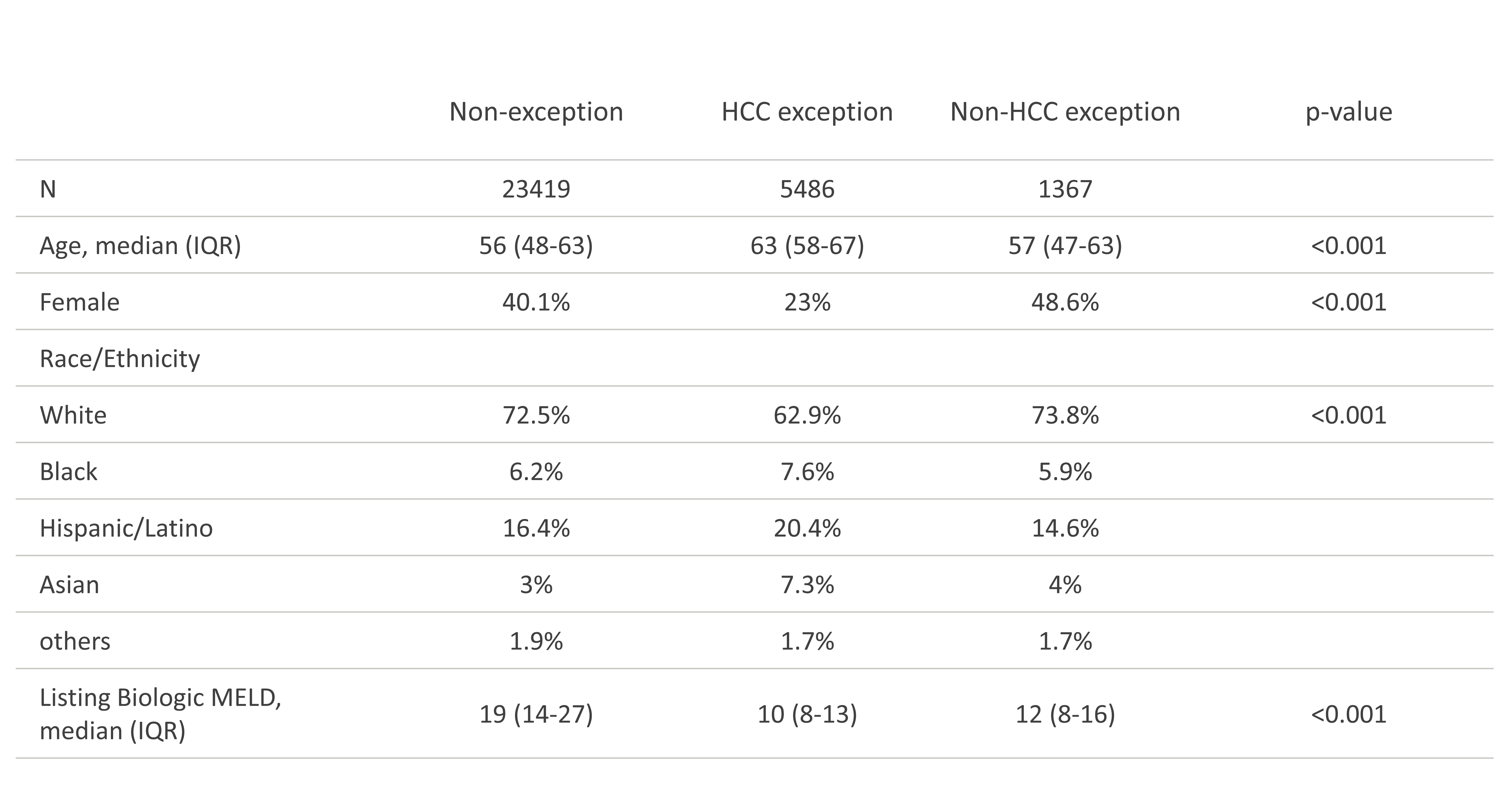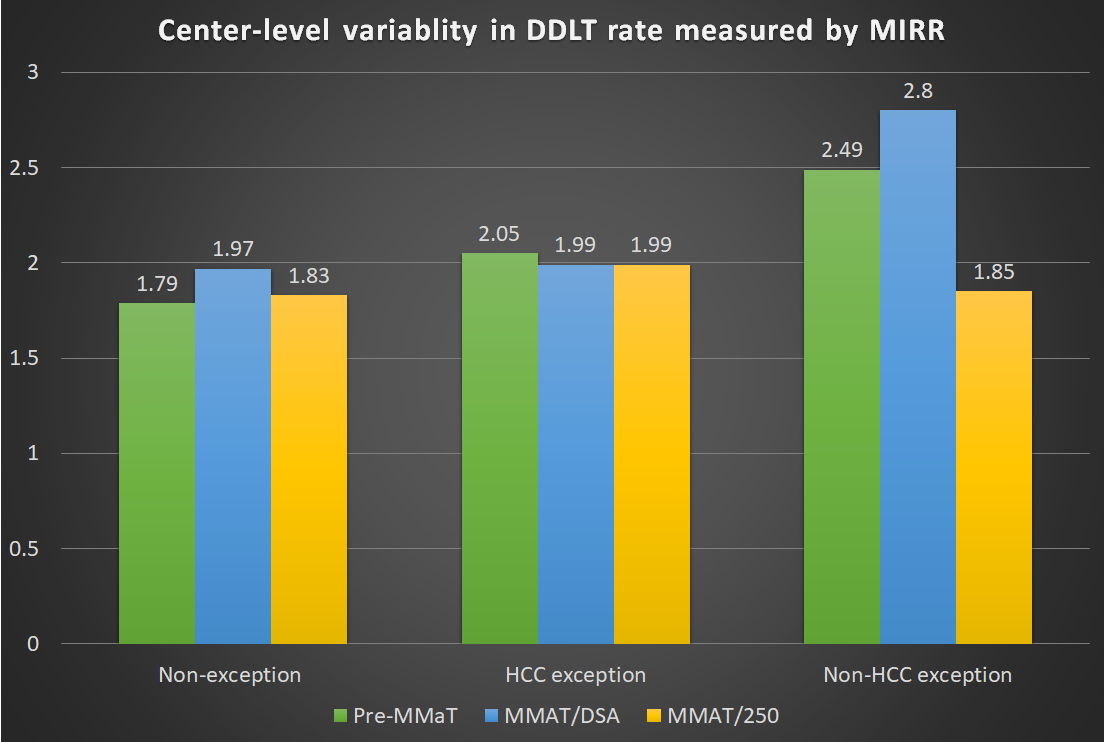Center-Level Variability in DDLT Rate Before and After the Implementation of MMaT/250 Score
Johns Hopkins Medical Institutions, Baltimore, MD
Meeting: 2022 American Transplant Congress
Abstract number: 1110
Keywords: Hepatocellular carcinoma, Liver transplantation, Outcome, Waiting lists
Topic: Clinical Science » Liver » 60 - Liver: MELD Allocation*
Session Information
Session Time: 7:00pm-8:00pm
 Presentation Time: 7:00pm-8:00pm
Presentation Time: 7:00pm-8:00pm
Location: Hynes Halls C & D
*Purpose: In 02/2020, OPTN replaced DSA/regional boundaries with acuity circles and substituted exception scores for individual patients to median-MELD-at-transplant within 250 nautical miles of a transplant center (MMaT/250). Prior to that, exception points were allocated based on DSA-level median-MELD-at-transplant (MMAT/DSA). These altered liver allocation systems might impact on existing geographic disparities in access to liver transplantation. We sought to characterize center-level variation in deceased donor liver transplant (DDLT) rates before and after the implementation of MMaT/250.
*Methods: Using SRTR data on 30,272 adult, first-time, active, DDLT waitlist registrants, we measured center-level variation in DDLT rate for non-exception, HCC exception and non-HCC exception candidates using a multilevel Poisson regression with center-level random intercepts in three eras: Pre-MMaT (02/01/2018-01/31/2019), MMaT/DSA (05/01/2019-02/03/2020), and MMaT/250 (02/04/2020-02/03/2021). We calculated the median incidence rate rato (MIRR) of transplant rate, a standard measure of variation in multilevel models; larger MIRR indicates greater center-level variability in DDLT rate. Models were adjusted for age, sex, race, and (for non-exception patients) biological MELD.
*Results: HCC candidates were older, less likely to be female, and white compared to non-exception and non-HCC exception candidates (Table). For non-exception candidates, MIRR was 1.79 in Pre-MMaT era, 1.97 in MMaT/DSA era and 1.83 in MMaT/250 era. For HCC-exception candidates, MIRR was 2.05 in Pre-MMaT era, 1.99 in MMaT/DSA era and MMaT/250 era. For non-HCC exception candidates, MIRR was 2.49 in Pre-MMaT era, 2.8 in MMaT/DSA era and 1.85 in MMaT/250 era (Figure)
*Conclusions: After the implementation of MMaT/250, the center-level disparity for non-exception candidates increased, for HCC exception candidates remained similar, and for non-HCC exception candidates decreased. Notably, MIRR is substantially higher than reported in prior studies of geographic disparities in kidney and lung. Despite the change in liver allocation policy, candidate’s choice of transplant center still plays an influential role in access to DDLT.
To cite this abstract in AMA style:
Ishaque T, Beckett J, King B, Wang JG, Segev D, Massie A. Center-Level Variability in DDLT Rate Before and After the Implementation of MMaT/250 Score [abstract]. Am J Transplant. 2022; 22 (suppl 3). https://atcmeetingabstracts.com/abstract/center-level-variability-in-ddlt-rate-before-and-after-the-implementation-of-mmat-250-score/. Accessed January 8, 2026.« Back to 2022 American Transplant Congress


